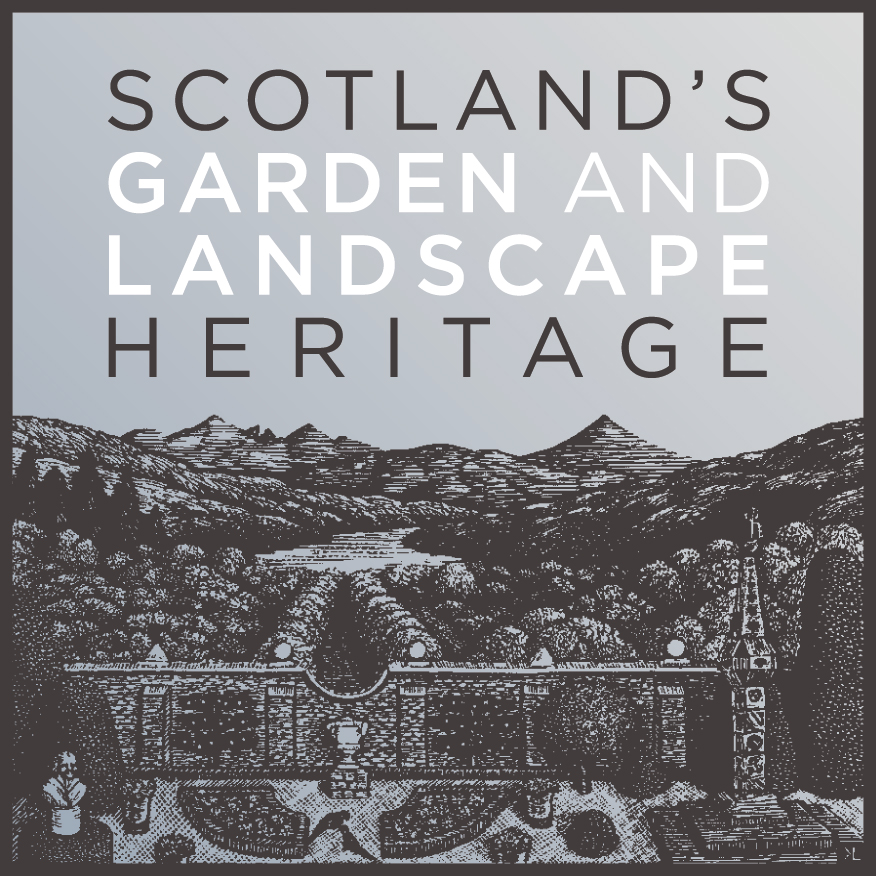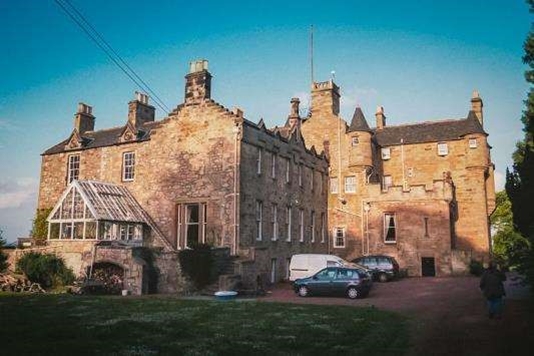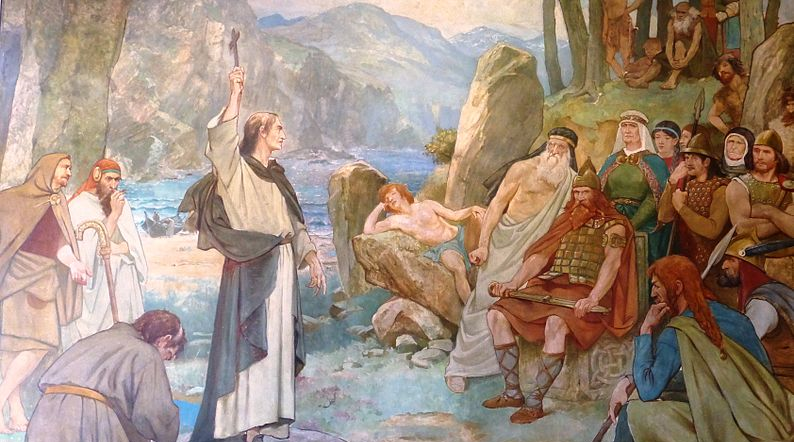As Scotland’s Garden and Landscape Heritage (SGLH) Chairman I am very proud to present this story about Camelon Cemetery by Marion Shawcross and Fiona Gordon, volunteers on the Glorious Gardens team assigned by SGLH to the recording of non-inventory designed landscapes and gardens in the Falkirk area. The Glorious Gardens project was launched in Falkirk in 2015 and was funded by Historic Environment Scotland. This is one of the 16 sites covered by SGLH in this area. A similar project was carried out in the Clyde and Avon Valley, and we are currently planning a third phase, which will focus on sites in East Lothian. For more details, please go to https://www.sglh.org.
Camelon Cemetery is one of the most awe-inspiring cemeteries in Scotland, with some majestic trees and magnificent monuments. It was opened in 1870 to serve the town of Falkirk, which at the time was in the county of Stirlingshire. Camelon Cemetery has been the main cemetery for Falkirk for almost 150 years.
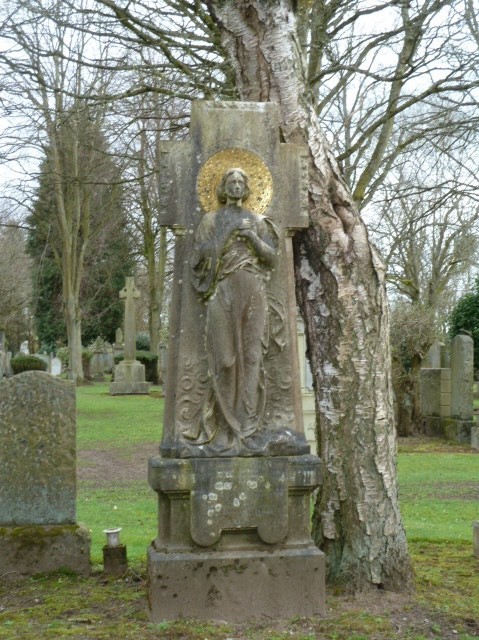

The historical need for new burial grounds
In the early 19th century, church graveyards were overcrowded and unhygienic, especially in towns and cities with a burgeoning population. Corpses were being moved regularly to make room for new burials, risking the health of the living. This was the case in Falkirk, where until 1870, the townsfolk were buried in a number of small churchyards. A report written in 1859 drew attention to the unacceptable state of their burial grounds:
“A filthy and offensive ditch separates the burial ground from the houses and the moisture which exudes from the crowded and elevated burial ground is most unwholesome to those living in these houses, shops or workrooms on the High Street.” (Scott, Falkirk Herald 2015)
A movement for rural burial grounds away from town centres began, and private companies saw a commercial opportunity. They offered the professional and mercantile families who could afford to buy a plot somewhere permanent to lay their deceased. In Scotland, the earliest and most notable private cemetery was the Necropolis in Glasgow, opened in 1833. Stewart Murray, the first curator of Glasgow Botanic Gardens, was consulted over the landscape and the planting of the Necropolis, showing the value placed on horticultural expertise. These cemeteries became known as “Garden Cemeteries.” The cemetery in Falkirk, however, was not established by a private company but by a forward-thinking local council.
Construction of Camelon Cemetery
In 1855 the Burial (Scotland) Act had made provision for local parish boards to borrow in order to buy land and develop burial grounds for people of all classes. The Parish Board of Falkirk, in response to the overcrowded state of the four main churchyards in their parish, set about the task of choosing and purchasing land for a new cemetery. In 1869 they purchased 11 acres on the outskirts of the town from the Earl of Zetland. It was deemed suitable for a burial ground as there were no houses in the vicinity and the ground was sandy and dry. Robert Gillespie described it as the “rural burial-field for Falkirk and neighborhood” (Gillespie 1879).
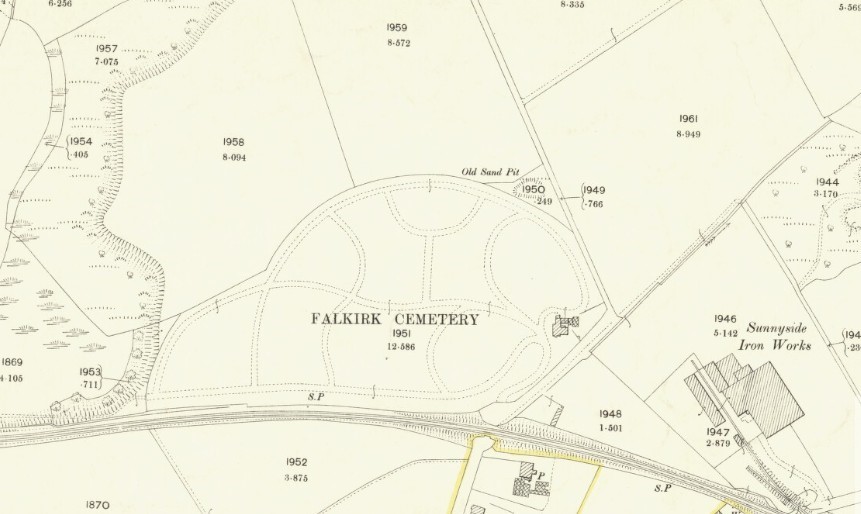

Alexander Black, land surveyor, was appointed Inspector of Works for the venture. Peter Clark, a curator at Glasgow Botanic Gardens, was appointed to implement the planting proposals. William Millar, from the new cemetery at Port Glasgow, was appointed superintendent. Mr. Millar’s pay included a monthly salary and the tenancy of the superintendent’s house. Clark and Millar worked together on the design, which was evocative of the style of public parks of the time. The original specification for the work is held in the Archive in Callendar House, along with invoices for the stonemason.
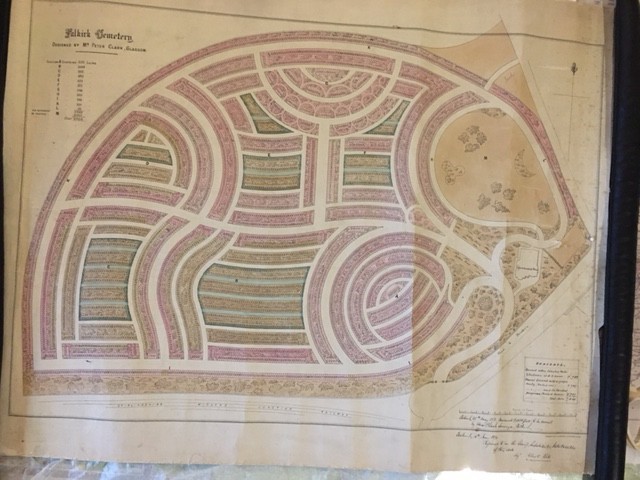

The detailed specification largely followed the instructions of John Loudon, a prolific horticultural writer. In 1843 he wrote a manual for creating new cemeteries. He recommended double rows for burials with soil between the rows to allow for monuments. He set out detailed specifications for all aspects of the site, including, the layout, drainage and planting. He advised planting pines, firs, cypresses, yews, and junipers, trees which allowed in the sun. Paths should be 3 feet wide to enable the smooth passage of the coffin. He advised against flowers, to prevent cemeteries resembling pleasure grounds.
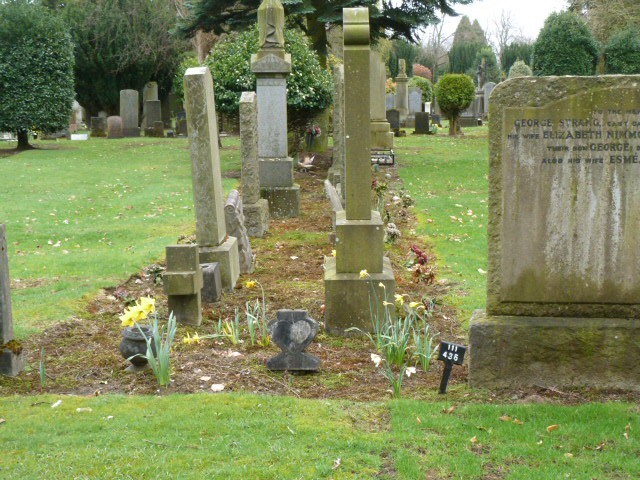

The Cemetery Opens
The cemetery was opened in 1870. From the outset, the cemetery was popular with the people of Falkirk. Contemporary newspaper reports were effusive (Falkirk Herald, 27 July 1871 and 5 November 1871). Sarah Tarlow suggests that garden style cemeteries were popular because they allowed people to demonstrate, in their monuments and inscriptions, not only their respect for their dead but their standing in the community. The permanency of tenure of plots added a sense of immortality which had been lost in graveyards for all but the wealthiest. Visitors would come to the cemetery not only to mourn and remember, but also to admire the sculptural monuments and handsome planting.
In 1870 Peter Clark was commissioned to devise a plan to improve Falkirk’s Auld Kirkyard, so the advent of the cemetery had a knock-on benefit to the old churchyard. His main recommendation was to level the old burial ground, a recommendation imposing the "lawn cemetery style” on the old churchyard, one that could be maintained relatively easily (Falkirk Herald and Linlithgow Journal, 20 November 1875).
Continual Expansion
The cemetery proved popular with local people and was always favoured as a place to walk as well as to remember the dead. Periodically, extra acres of adjoining land were bought to ensure there was sufficient room for the required number of burials. Two additions, in 1898 and 1928, were styled like the original cemetery, and lying within external stone walls, made a unified landscape, although further up the hill, as the years passed, the interments became closer and the inscriptions more modest.
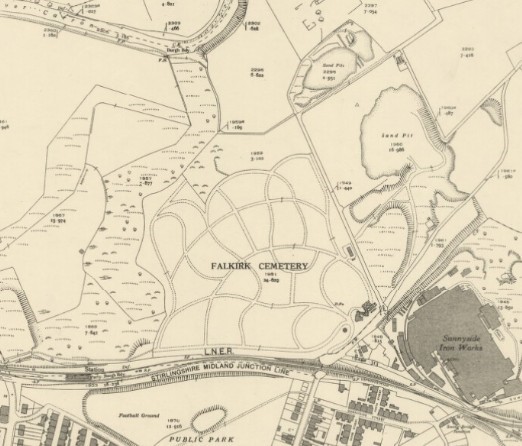

A stone fountain was erected across the road from the superintendent’s house. At some point after 1961, the fountain was relocated to a more prominent position on the main drive, though it is still within sight of the offices. Today it is surrounded by a bed of flowers. In the mid-1920s a Commonwealth War Graves Commission monument honouring the dead of the Great War was erected near the main drive, but the graves of soldiers who died in WWI and WWII are scattered throughout the cemetery.
The crematorium was opened in 1962 reflecting the shift away from burial to cremation. An additional field for burials was added at this time, arranged with tidy rows of lairs, separated by neat strips of grass.
What’s There Today
The cemetery’s landscape has changed little from the original design by Peter Clark and William Millar. Roads edged by generous grassy paths, wide enough to allow for mowing, wind uphill through beautiful ceremonial trees. There are many fine classical monuments, some with grand inscriptions, some sorrowful.
As well as detailed advice on layout and planting, John Loudon shared his Victorian views on morals and self-improvement:
“churchyards and cemeteries are scenes not only calculated to improve the morals and the taste and by their botanical riches to cultivate the intellect, but they serve as historical records” (Loudon 1843).
The local authority has remained the owner and custodian of the cemetery, with responsibility to keep the cemetery well managed and maintained, although surprisingly the site is not included in the inventory of gardens and landscapes, and there are no listed structures.
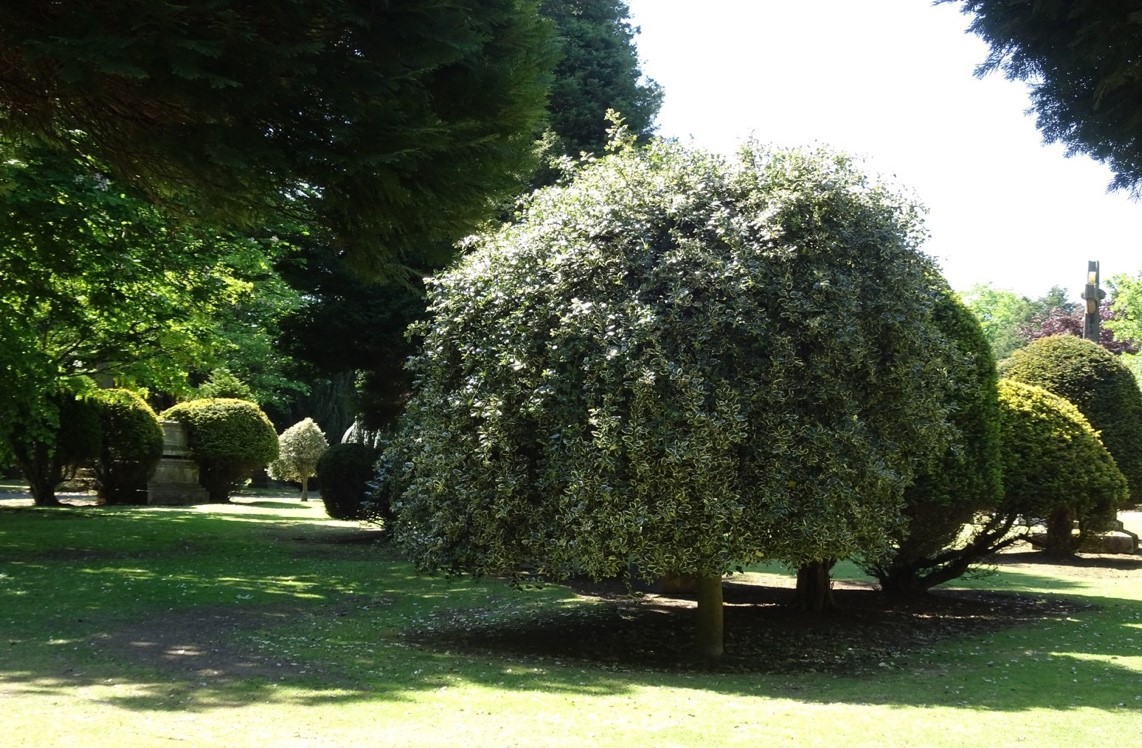

By Marion Shawcross and Fiona Gordon, Scotland’s Garden and Landscape Heritage volunteers.
